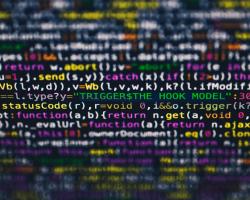Siting Experience Documents Only
Country
Keywords
Treatment and final disposal of nuclear waste: Programme for encapsulation, deep geological disposal, and research, development and demonstration: Ch 6 - App 1
Treatment and final disposal of nuclear waste: Programme for encapsulation, deep geological disposal, and research, development and demonstration: Ch 6 - App 1
In RD&D-Programme 92, SKB presented a partially new strategy for its activities. The new strategy entailed a focusing and concentration on the implementation of deep disposal of a limited quantity (about 800 tonnes) of encapsulated spent nuclear fuel during the coming 20-year period. Following this initial deposition, the results of the work will be evaluated, and only then will a decision be taken as to how and when regular deposition of the main body of the fuel and other long-lived nuclear waste will take place.
LONG TERM GOVERNANCE FOR RADIOACTIVE WASTE MANAGEMENT ANNEX OF THE FINAL REPORT OF COWAM2 - WORK PACKAGE 4
LONG TERM GOVERNANCE FOR RADIOACTIVE WASTE MANAGEMENT ANNEX OF THE FINAL REPORT OF COWAM2 - WORK PACKAGE 4
The purpose of COWAM2 Work Package 4 (WP4) on "e;long term governance"e; was to identify, discuss and analyse the institutional, ethical, economic and legal considerations raised by long term radioactive waste storage or disposal on the three interrelated issues of: (i) responsibility and ownership of radioactive waste over long term, (ii) continuity of local dialogue between stakeholders and monitoring of radioactive waste management facilities, and (iii) compensation and sustainable development.
Tools for Local Stakeholders in Radioactive Waste Governance: Challenges and Benefits of Selected PTA Techniques WP1
Tools for Local Stakeholders in Radioactive Waste Governance: Challenges and Benefits of Selected PTA Techniques WP1
The investigation consists of three parts and shall provide an input to the – empirical – PTA-2 study to be undertaken by SCK•CEN (called “lens”):<br>A. Compilation of – selected – existing PTA methods and procedures identifying requisites, practices, benefits, and challenges to answer the key questions in the context of WP1 about a PTA “toolbox”: “What can you apply, when can you apply, and what is needed to apply?” The multi-dimensional context of a possible “PTA situation” is analysed; suitable and nonsuitable methods, techniques and procedures are discussed.<br>B.
Recommendation Group 5
Recommendation Group 5
Recommendation Group 3
Recommendation Group 3
Long Term Governance for Radioactive Waste Management WP4
Long Term Governance for Radioactive Waste Management WP4
The purpose of COWAM2 Work Package 4 (WP4) on "e;long term governance"e; was to identify, discuss and analyse the institutional, ethical, economic and legal considerations raised by long term radioactive waste storage or disposal on the three interrelated issues of: (i) responsibility and ownership of radioactive waste over long term, (ii) continuity of local dialogue between stakeholders and monitoring of radioactive waste management facilities, and (iii) compensation and sustainable development.
Guidance on the Selection of PTA Tools: For Stakeholders involved in Radioactive Waste Governance WP1
Guidance on the Selection of PTA Tools: For Stakeholders involved in Radioactive Waste Governance WP1
This research on "e;Guidance on the selection of PTA tools for stakeholders involved in radioactive waste governance"e; was performed under the umbrella of COWAM2-'Work Package 1' (WP1). Through a dialogue on enhancing involvement at a local level, WP1 allows local stakeholders to examine the issues they face in building a democratic local governance process. WP1 also tests how Participatory Technology Assessment (PTA) methods can offer a consensual framework and a platform for deliberative co-decision among scientific and societal actors at the local level.
Possible Strategies for Geoscientific Classification for High-Level Waste Repository Site Selection
Possible Strategies for Geoscientific Classification for High-Level Waste Repository Site Selection
This work was performed to suggest possible strategies for geoscientific classifications in the siting process of a high-level repository. To develop a feasible method for geoscientific classifications, a number of factors of a philosophical character, related to the purpose of the classifications, need to be accounted for. Many different approaches can be visualized, and this report was not intended to present a complete classification methodology.
Recommendation Group 6
Recommendation Group 6
REFLECTIONS ON THE INFLUENCE OF THE LOCAL ACTORS ON THE NATIONAL NUCLEAR WASTE MANAGEMENT FRAMEWORK
Recommendation Group 4
Recommendation Group 4
Recommendation Group 1
Recommendation Group 1
European-level Guidelines for the Inclusive Governance of Radioactive Waste Management
European-level Guidelines for the Inclusive Governance of Radioactive Waste Management
CIP (Community Waste Management In Practice) is a research action gathering a wide spectrum of stakeholders from five European countries, interested in how society should manage the radioactive wastes that result from nuclear power production and/or from medical, military or industrial applications.
Final Report: Influence of Local Actors on National Decision-making Processes WP2
Final Report: Influence of Local Actors on National Decision-making Processes WP2
Work Package 2 (WP2) focused on the ways in which local stakeholders can influence national decision-making processes on radioactive waste management (RWM). The participants in WP2 were particularly interested in examining how local stakeholders could contribute to national debates. Their interest stemmed from the fact that participants from France, Spain and the United Kingdom — who made up the majority of the WP2 group — were engaged, as stakeholders, in the decision-making processes that were under way in each of those countries.
Recommendation Group 2
Recommendation Group 2
Management of Uncertainty in Safety Cases and the Role of Risk - Workshop Proceedings
Management of Uncertainty in Safety Cases and the Role of Risk - Workshop Proceedings
The development of radioactive waste repositories involves consideration of how the waste and the
engineered barrier systems will evolve, as well as the interactions between these and, often relatively
complex, natural systems. The timescales that must be considered are much longer than the timescales
that can be studied in the laboratory or during site characterisation. These and other factors can lead to
various types of uncertainty (on scenarios, models and parameters) in the assessment of long-term,
D1-9 Prospective Case Study - Romania
D1-9 Prospective Case Study - Romania
Joint Convention on the Safety of Spent Fuel Management and on the Safety of Radioactive Waste Management, Sweden National Report
Joint Convention on the Safety of Spent Fuel Management and on the Safety of Radioactive Waste Management, Sweden National Report
Spent fuel in Sweden emanates mainly from four commercial nuclear power plants. In addition there is one material testing reactor and one research reactor. The radioactive waste originates from the nuclear power industry as well as medical use, industry, research and consumer products.
Impact of Nuclear Information on Young People's Knowledge and Attitudes: Methods/Participatory tools in an Educational Program WP1
Impact of Nuclear Information on Young People's Knowledge and Attitudes: Methods/Participatory tools in an Educational Program WP1
Despite in Romania nuclear research activities were started in early 50s, the nuclear power is very young. First NPP, Cernavoda Unit 1, about 600 MWe, was in operation since 1996. Next unit (Cernavoda Unit2) will be in operation at the end of 2007. Therefore, a relative low amount of high level waste was produced. However, some problems already exists in Romania, mainly related to historical radioactive wastes released by nuclear industry and research.
Actual Implementation of a Spent Nuclear Fuel Repository in Sweden: Seizing Opportunities
Actual Implementation of a Spent Nuclear Fuel Repository in Sweden: Seizing Opportunities
10-year Record of Learning Factual List of Activities and Investigated Topics, and of People Who Contributed to Them
The Partnership Approach to Siting and Developing Radioactive Waste Management Facilities
The Partnership Approach to Siting and Developing Radioactive Waste Management Facilities
History shows that the search for sites for radioactive waste management facilities has been marred by conflicts and delays. Affected communities have often objected that their concerns and interests were not addressed. In response, institutions have progressively turned away from the traditional “decide, announce and defend” model, and are learning to “engage, interact and co-operate”. This shift has fostered the emergence of partnerships between the proponent of the facility and the potential host community, as shown in a recent NEA study.


